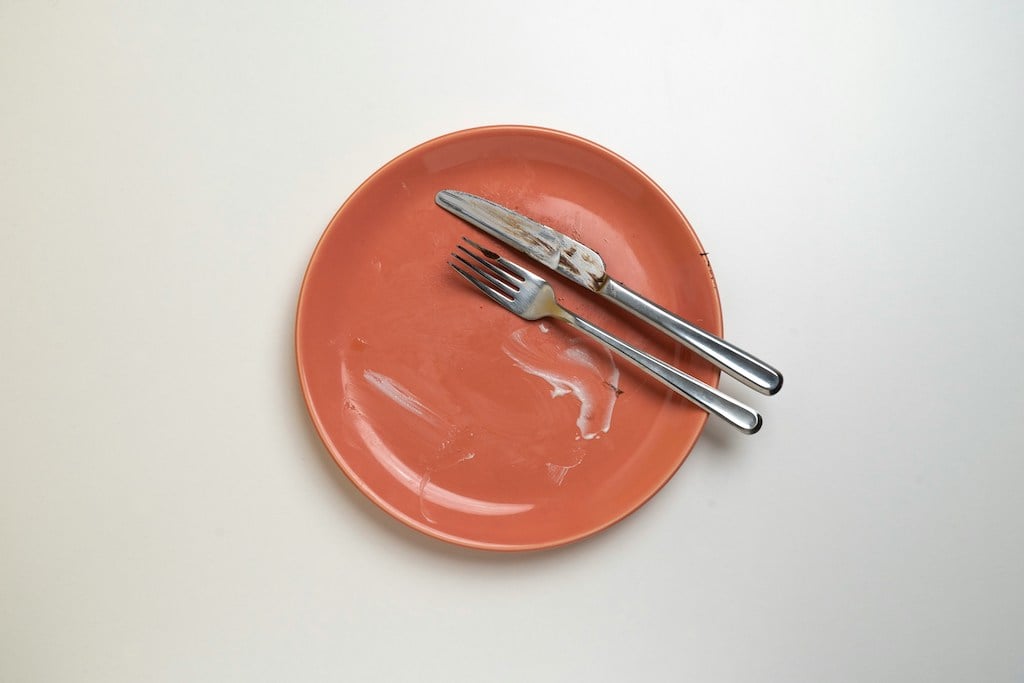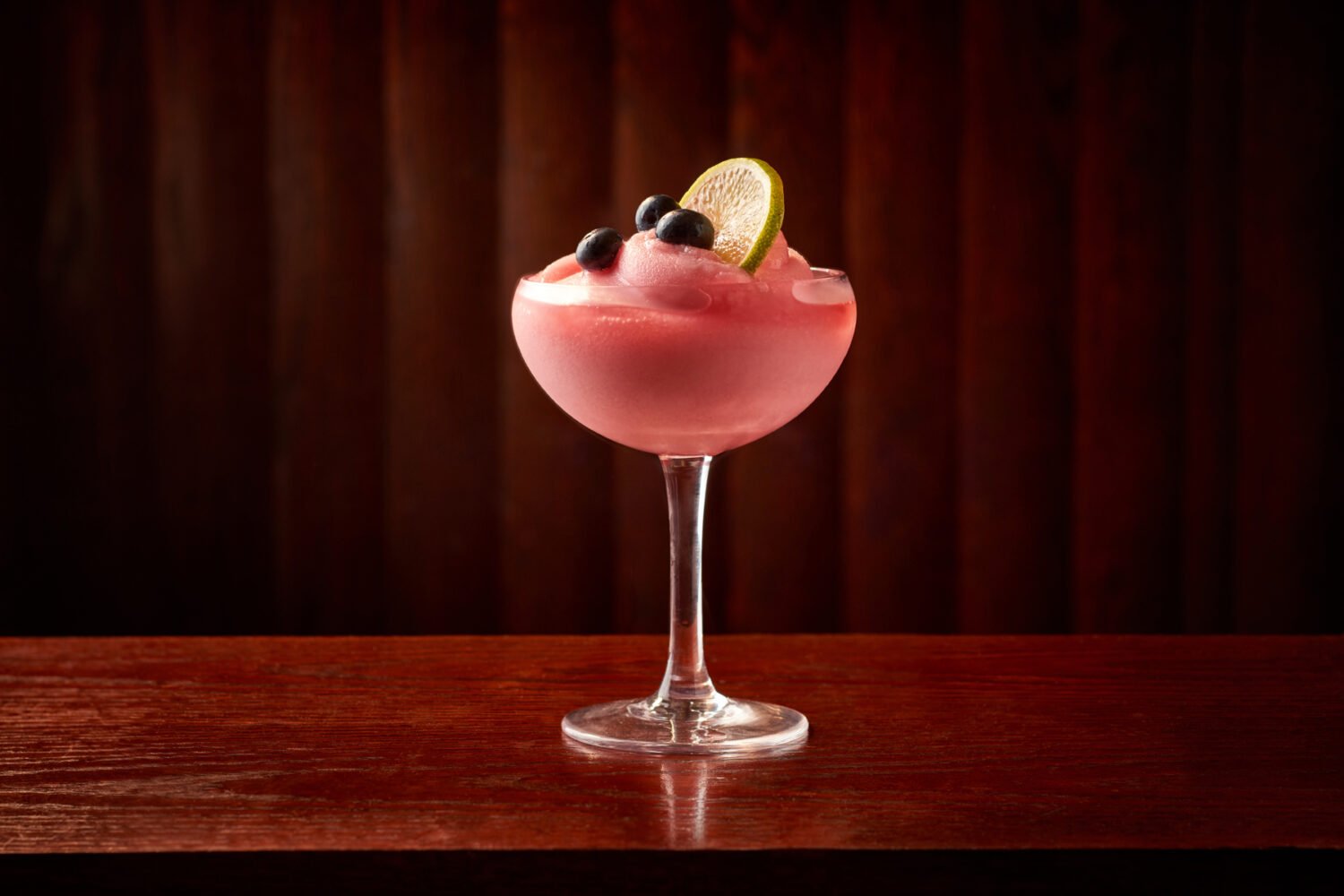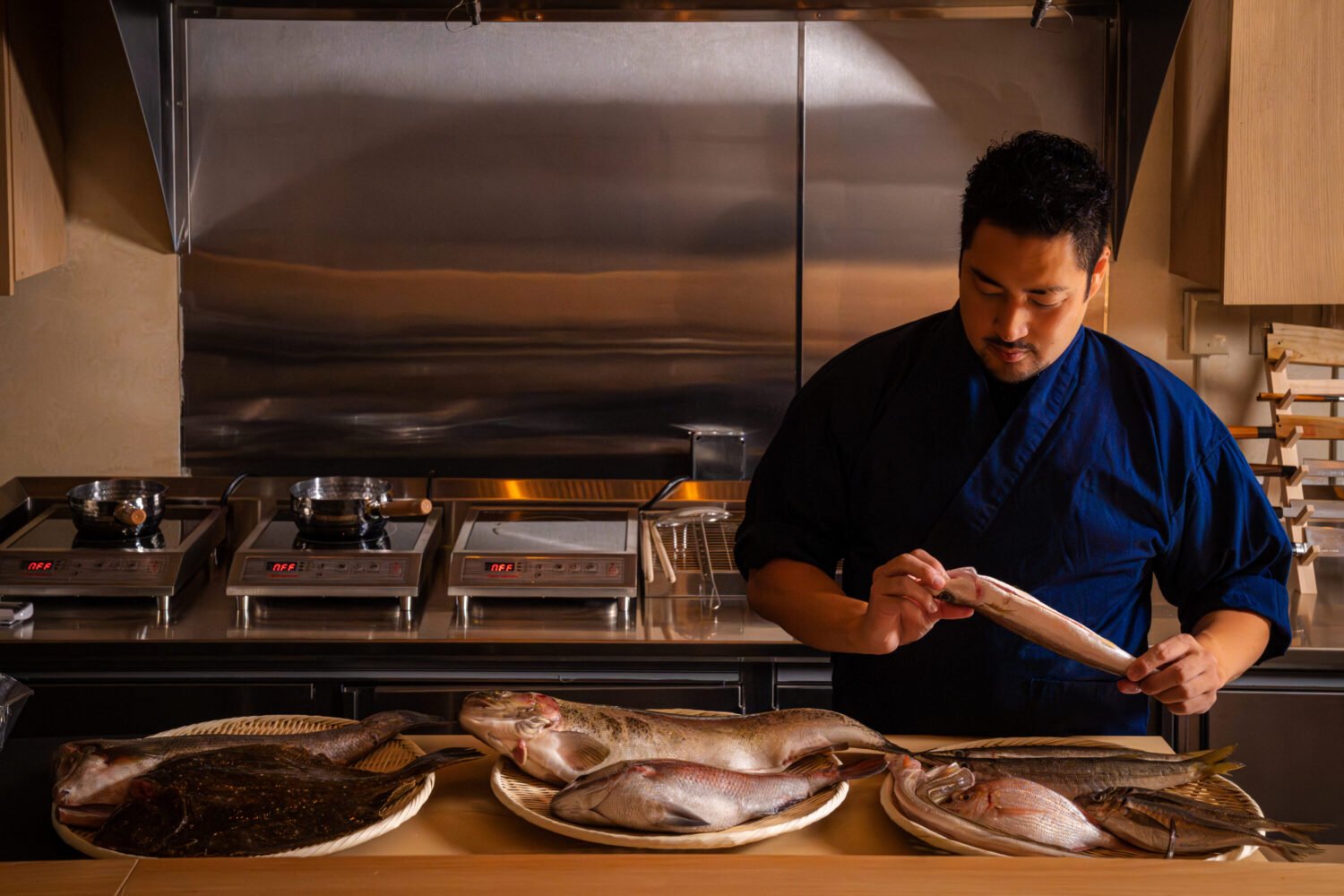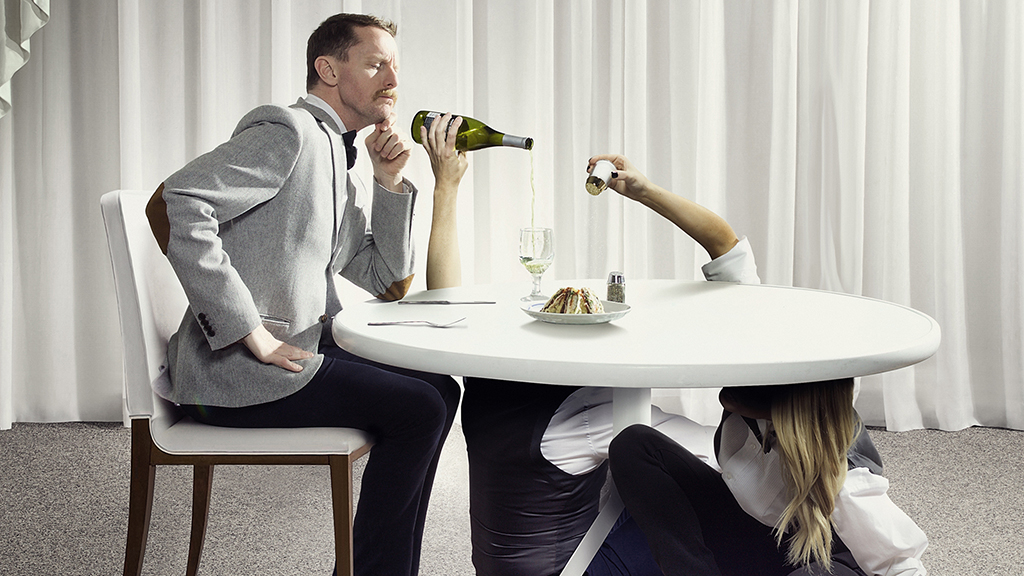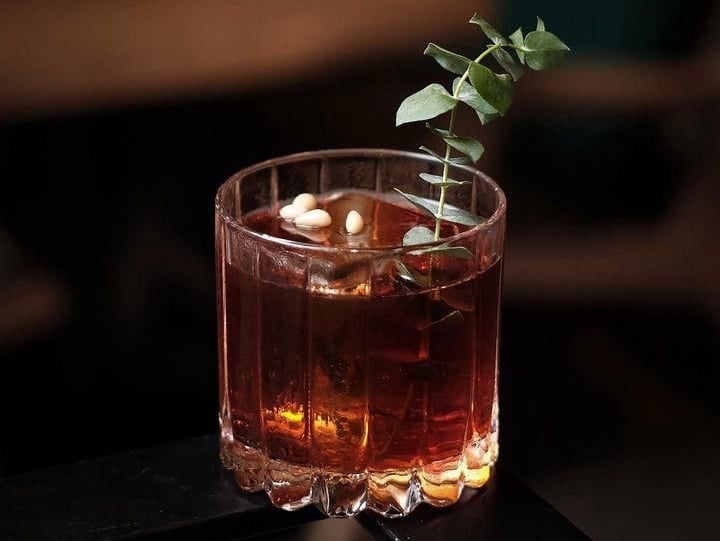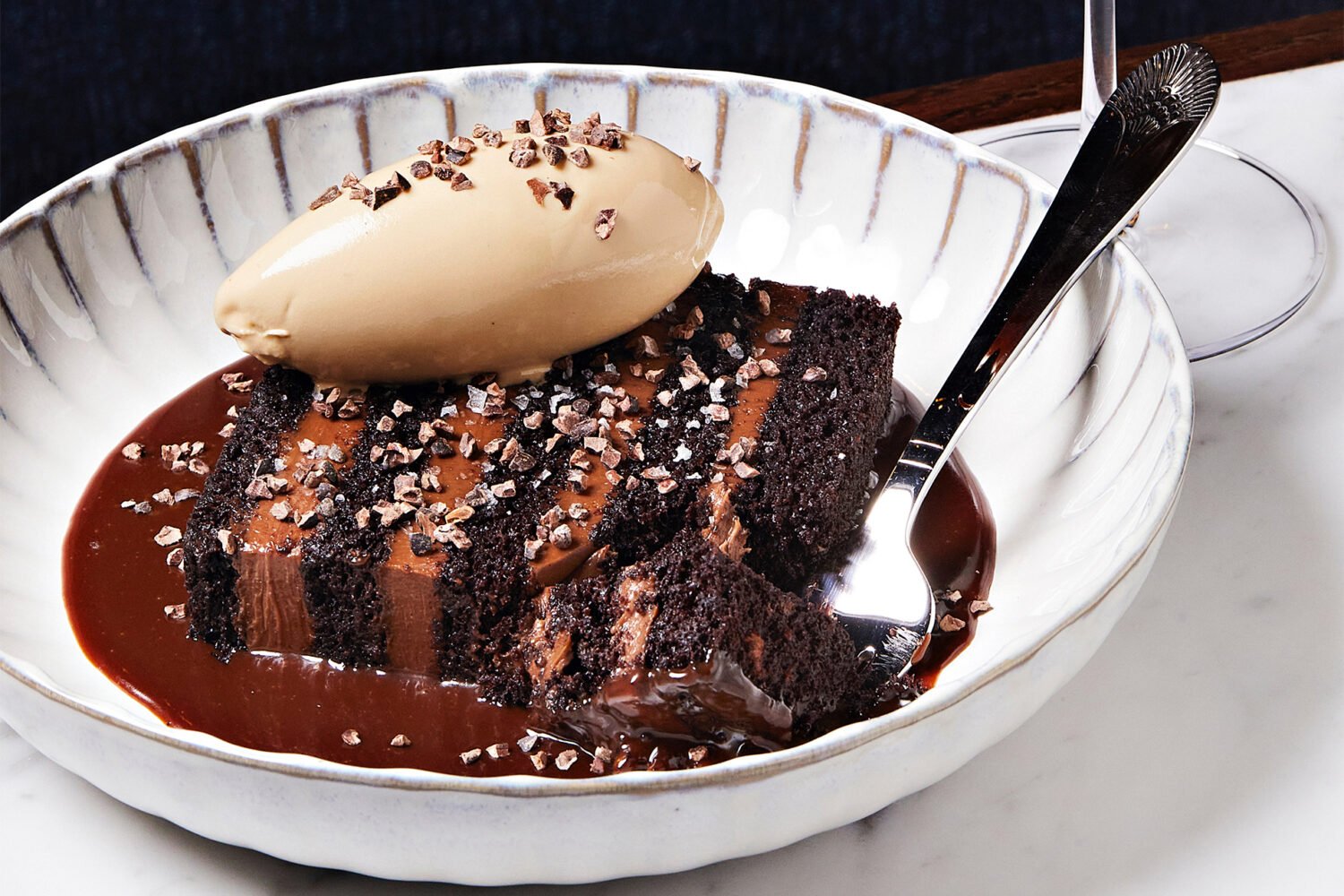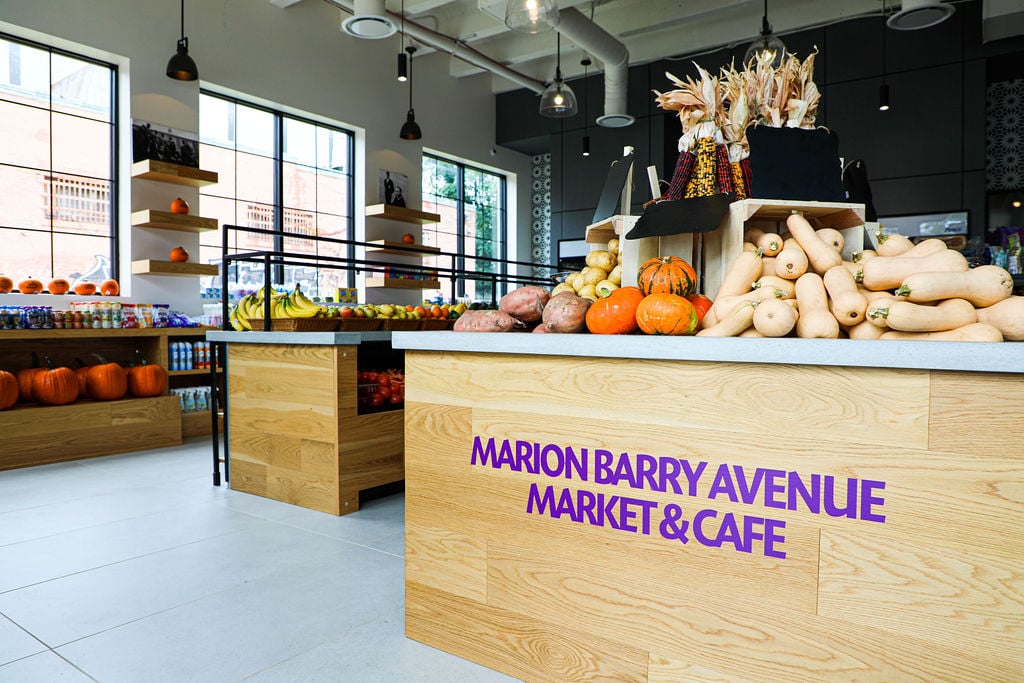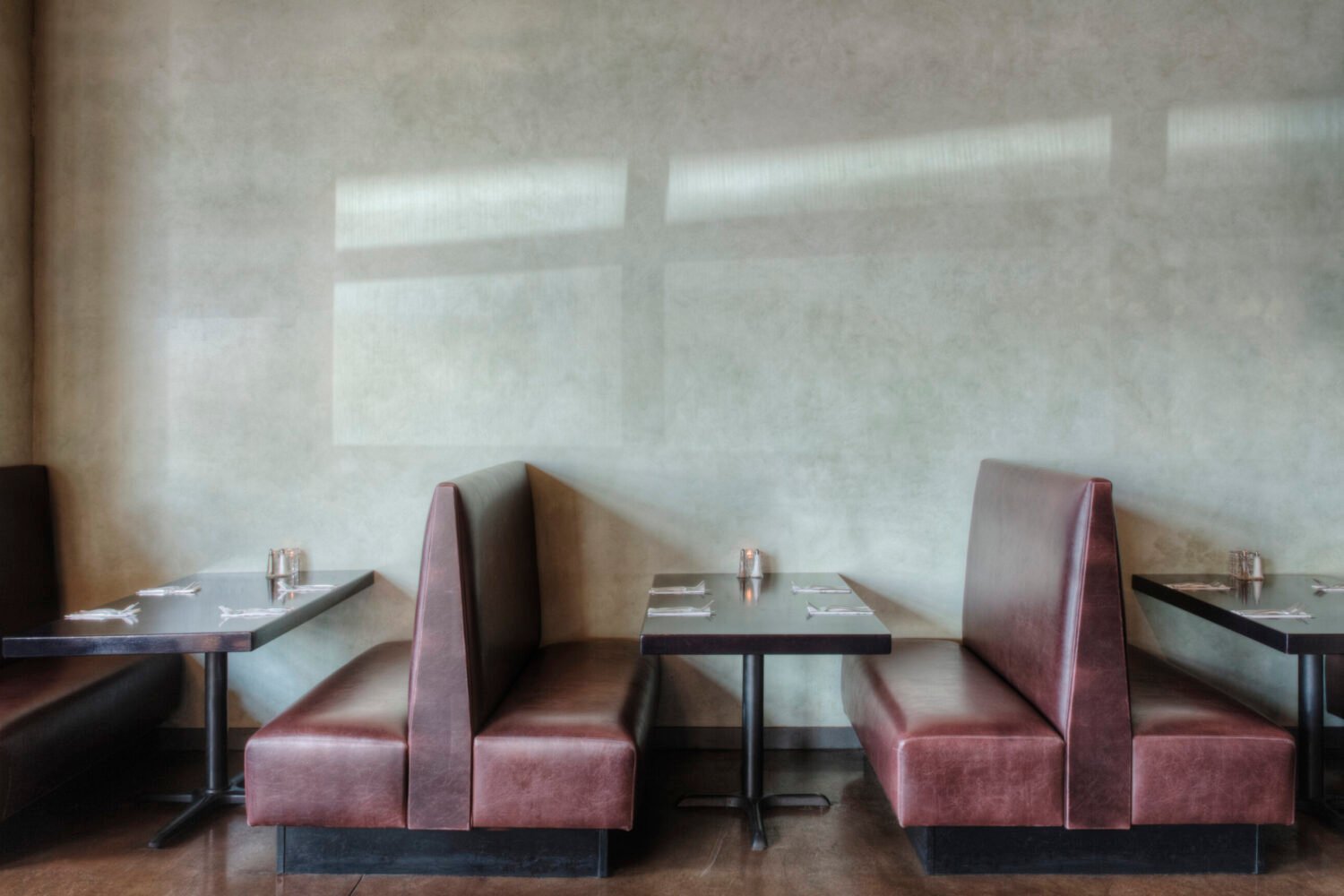A duck-sausage-stuffed quail turns on a spit, making hissing sounds as its rendered fat hits the fire. Nearby, an array of skewered delectables—meatballs, foie gras, chicken skin—sizzles on a charcoal grill as a crew of kerchiefed cooks monitors the pit. At the bar, well-heeled patrons stare with an almost primal fascination, drawn not just by the smells that waft over the open room but also by the flames that shoot up from the sputtering grill in the center of the vaulted room.
This is the nightly scene at the new Kushi, which set up shop a few months ago in DC’s Mount Vernon Square—along with outposts of Taylor Gourmet and Busboys and Poets—several blocks from the edge of fashionable Penn Quarter. Its arrival is further evidence that development in downtown DC continues to move east—and that seriousness and sexiness aren’t such strange bedfellows after all.
Also, that dinner itself can be a form of theater: As the meats sputter on the grill, a hostess with a two-toned Mohawk works the room troubleshooting problems. The sound system thumps out a hard, stuttering beat. The concrete floors and 20-foot ceilings—staples of industrial chic—accentuate the noise.
At peak hours, it can seem as if all of young Washington has flash-mobbed the space. Tweeting and texting have brought the restaurant an early following, and to enter through the white linen curtain is to experience the energy of opening night of a new play. Yet the staff at Kushi is calm and controlled. No servers hurry through the room. Nobody shouts to be heard. You might guess that everyone has been transplanted from a Japanese tea garden into this electric setting.
That electricity is one of the things separating Kushi—the vision of co-owner and executive chef Darren Lee Norris, who previously ran the catering department at Ridgewells—from every other Japanese restaurant in the area. There are quiet, sparely appointed restaurants with tinkling music, fountains, and decorous service as well as sushi bars both simple and lavish, but nothing with Kushi’s club-like pulse. It’s as if, passing through the linen curtain, you’ve stepped into SoHo or West Hollywood.
Tempting though it is to chalk the vibe up to yet another restaurateur’s effort to woo the young and affluent, in this case form largely follows function. Kushi is an izakaya—loosely translated, a Japanese tavern, a place for drinking and small plates, a casual alternative to a full-service restaurant. Izakaya are often designed to meet the needs of harried urban professionals, and many crop up near subway stops in Japan’s biggest cities. Some are actually inside the stations.
Speed, not precision, is the emphasis at an izakaya, so it should follow that the food at Kushi wouldn’t bear too much scrutiny. That’s sometimes the case with the roster of grilled items, which consumes nearly half of the sprawling menu, but the sushi is some of the most exciting and exacting in town—and appears poised to challenge Sushi Taro’s raw-fish supremacy.
Last year, Sushi Taro reopened in its lair off Dupont Circle after a three-month renovation, making shopping the focus of its mission, including daily shipments of raw fish from Tokyo’s Tsukiji market, where bidding on tuna is as competitive as trading on Wall Street. In a single bold stroke, Sushi Taro rewrote the rules for sushi bars in Washington, and Kushi appears to have been taking notes.
One night not long ago at Kushi, there was a special of raw uni, its spiny shell stuffed with chipped ice and five brilliant orange lobes draped on top. I’d never seen fresh uni in a local restaurant and couldn’t resist ordering it, despite the price tag: $30 for what amounted to a small appetizer. But uni has never tasted sweeter, fresher, or more bracing, and when I finished my last bite, I flirted with ordering another.
The uni is the best example of Kushi’s commitment to procuring first-rate fish, but there’s also live scallop, likewise served in its shell, and live baby eel, which look like translucent rubber bands. The impressive roster of fish includes o-toro (the fatty tuna that has been devalued of late by overfishing), mackerel (with not a trace of the mealiness or acridity that’s so often its undoing), and sweet shrimp (so delicate it nearly melts on the tongue). I tried all of these as nigiri, the elegant carved fish draped atop slender bundles of sugared, vinegared rice.
I’ve eavesdropped on complaints at nearby tables and read grumbling online about the size of the nigiri here, but it needs to be said that these bites are sized right; it’s just that the sushi boom—which saw portions become so super-sized that the bands of fish dwarfed the bed of rice they were supposed to be in balance with—has changed perceptions of what sushi ought to look like, and not generally for the better.
There have been grumbles, too, about the cost of dining at Kushi. If you order impulsively—and it can be hard not to when you watch attractive plates of hot, sizzling morsels go by—the bill can add up quickly. With few exceptions, most dishes from the grill are sized between an amuse-bouche and a tapa. To cobble together a satisfying meal for two of both sushi and grilled items involves a lot of mulling and planning. The first time I ate at Kushi, I over-ordered; the second time I under-ordered and then over-ordered on the fly; the third time—the restaurant critic as Little Red Riding Hood—I got it just right.
The other danger here is to regard the grilled things as the centerpiece of a meal, or even as equals to the raw fish. The problem is with consistency. I’ve had skewers of meats that were underseasoned, but more frequently—and more distressingly—they arrived overseasoned, doused in salt. A skewer of meatballs was terrific; a skewer of fried chicken skin was nearly inedible. Sometimes meats are underseasoned and overcooked, as was the case with a skewer of cubed heritage chicken and scallions one night. This was baffling because I’d ordered the same dish a week earlier and found it perfectly seasoned and cooked.
When the kitchen isn’t rushing, the grill can yield exciting discoveries. A lobe of grilled foie gras is eye-opening, a dab of sweet plum jelly setting off its light smokiness. A fried duck thigh tastes like a cross between fast food and bistro, a crunchy take on duck confit that has been perfect every time I’ve ordered it.
The key is to think of these small plates as accessories and to build around the sushi and sashimi. To that end, I would make Kushi’s bara chirashi—presented in a lacquered jewel box—the anchor of my meal, the dish around which every other ordering decision revolves. It’s a cool casserole of diced and sliced fishes arranged in a vivid pattern atop sesame-seeded rice. Ribbons of cooked egg and pickled ginger are laced throughout—subtle touches that vary the taste and texture of every bite. Chirashi is seldom as aesthetically striking as this, and I can’t think of a version as memorable.
The izakaya was designed for snacking, not a full-service dinner, and in presenting itself as a destination for leisurely dining, Kushi raises expectations about the kind of experience it can deliver. The moment the kitchen finishes a dish, the food is hustled to the table, regardless of how many plates are already there. Pileups occurred at every one of my meals. Servers are instructed to fold your cloth napkin when you vacate your seat to go to the restroom—a fuss
y touch that many high-end restaurants pride themselves on—but they’re not always on hand to bus your table.
One night I sat eating dessert amid a tableful of finished dishes. I might have griped more if I hadn’t been distracted by the clarity and intensity of the gealti and sorbets. A sorbet of Meyer lemon and shochu, a Japanese liquor, was as good as it was intriguing. So was the sea-salt gelato, which I liked even better when I paired it with the Valrhona dark-chocolate gelato, the one flavor teasing out and framing the other. If I’d been blindfolded, I’d have guessed I was in one of the area’s better ice-cream shops.
Then again, if I’d been blindfolded two hours earlier, I’d have guessed I was in New York or LA.
-July 2010

